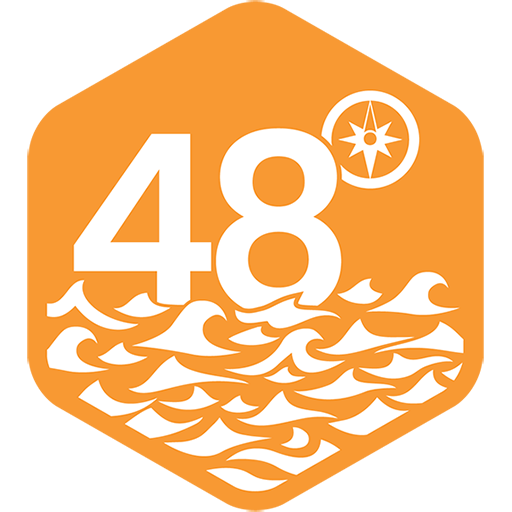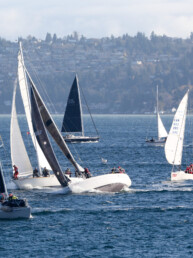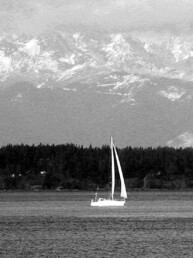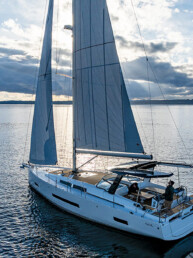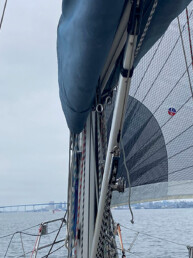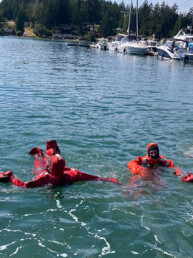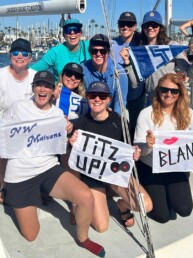Enjoy our latest Destinations column courtesy of Jim Burgoyne of SalishSeaPilot.com about what makes visiting Teakerne Arm so incredible.
Sometimes we forget how great a place is. I don’t blame memory loss; maybe it’s just that we have smooshed more than 800 anchorages and marinas into a suite of cruising guides and, sometimes, one or two just slip away, become ethereal and dreamlike, with bits of stardust flitting about.
Okay, so maybe it is memory loss.
Teakerne Arm is like that. We loved it, thought it was so cool the first few times we were there, with its swimming rocks at Cassel Lake and its waterfall into the sea.
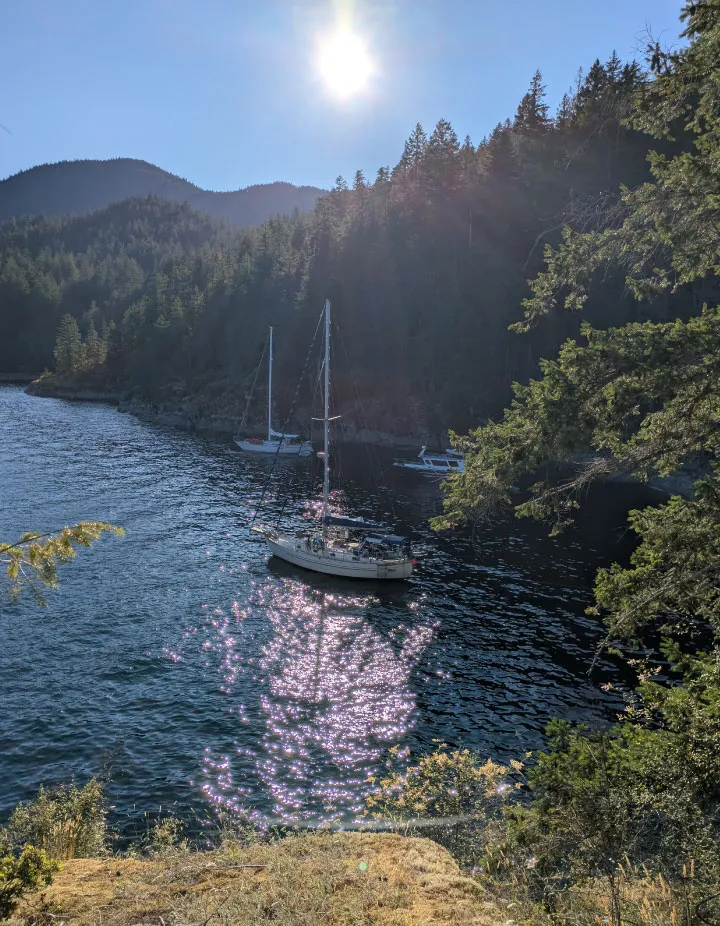
But other nearby anchorages, like Squirrel Cove and Von Donop Inlet, and those further east in Desolation Sound Marine Park, began to weasel their way into my hippocampus, where they dropped anchor and became the first thing I thought about when cruising to this area, intending to impress guests.
But then this summer we had kids from the Canadian Prairies aboard, and the idea of amazing them with a waterfall they could sit under, just like in the movies, compelled us to return to Teakerne Arm. The experience made us resolve again to make the anchorage one of the first places we bring guests to show off the best of the Salish Sea.
The various anchorages in Teakerne Arm are steep and deep, making it difficult to swing on a hook with adequate scope and not find yourself drifting onto the rocky shoreline. That means stern tying for almost everyone, and we know it’s something not all boaters are equipped for or comfortable doing.
There are two shore pins, one each on opposite shores at the entrance to the tiny bay in front of the waterfall. The tight space makes the pins suitable for only smaller, easily maneuverable vessels, though they can be difficult to reach depending on the state of tide. Often the pins are used by a single vessel, tying bow and stern.
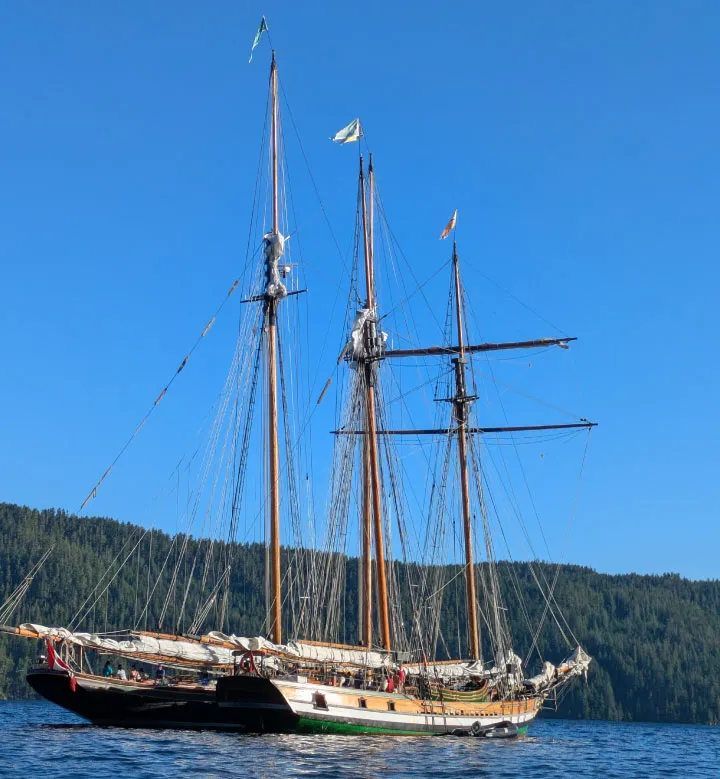
Also popular is the small cove north of the dinghy dock, where two or three vessels can anchor, depending on where the first vessel ties ashore. There is one shore pin here, set in the rock, which can be difficult to locate; easier to find and secure lines to are small trees growing out of the rocks.
There are other coves, some well treed, where it is easy to run a line ashore. We have been impressed by the creativity employed by some sailors when stern-tying alone or rafted with friends.
Large schooners, often carrying large groups of young people, typically anchor in very deep water west of the dinghy dock and run a long line ashore to a pin southeast of the dinghy dock.
Once moored, most boaters paddle over to the dinghy dock to explore a trail which leads to a viewpoint above the falls and eventually to swimming rocks on Cassel Lake. Along the trail are bits of aging, rusted machinery used by loggers long ago to haul their massive bounty down to sea. Some of the trail, navigated with the help of chains fastened to rock, is not for crew with mobility issues.
Cassel Lake offers a lovely place to swim, with clean freshwater and chains to help you launch yourself over the slippery smooth rocks at the water’s edge. It’s enchanting during the golden hour.
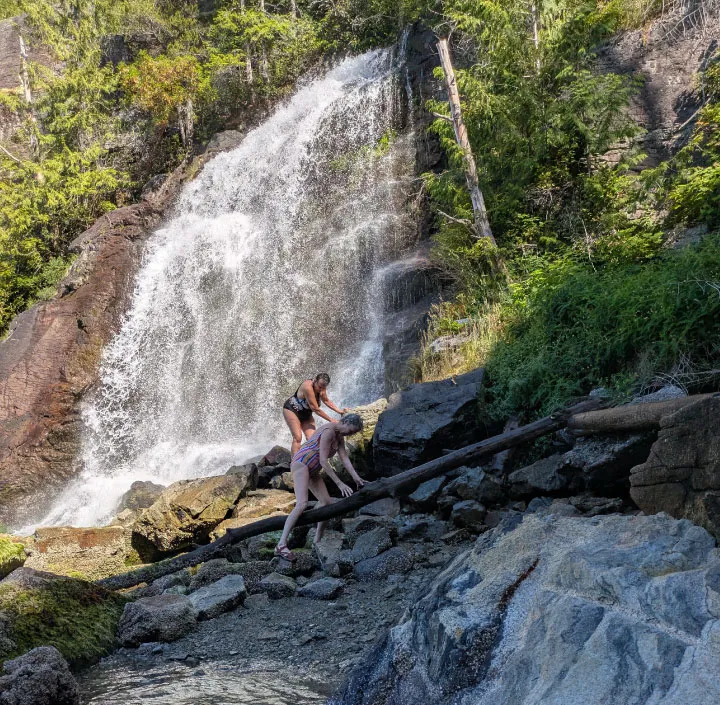
Maybe the most fun for kids, and even some adults, is dinghying to the falls where fit crew can climb up over boulders to a spot directly under the falls to enjoy a high-pressure shower. Best to wear grippy water shoes to protect your feet.
And our planned morning departure was delayed for an hour or two so we could squeeze in one last swim before weighing anchor while thinking, hopefully, that memory loss would not strike again.
Note: This article was originally published on SalishSeaPilot.com.
